A founding member talks about the group’s history and its enduring appeal
The Manhattan Transfer is the most successful vocal jazz group in music history. The 29 albums released by the quartet have sold in the millions. They’ve won 11 Grammys and countless other awards, even topped the Downbeat and Playboy jazz polls for a decade straight. TMT continues traveling all over the world, performing for a large fan base who still flock to see them. Most recently, they toured with the gospel/R&B vocal group Take 6 in a series of popular and critically acclaimed shows. TMT is gearing up for their 50th year together. Jazz critic and historian Leonard Feather called them “without peer as a vocal jazz quartet.”
Last summer, The Syncopated Times’ correspondent Brian R. Sheridan had chance to talk with Alan Paul, one of the group’s original members, for an exclusive interview. Paul generously gave of his time to discuss the band’s successes and failures as well as when tragedy nearly caused them to call it quits.
The Syncopated Times: Let’s start at the earliest days of The Manhattan Transfer. Tim Hauser had already founded a group with that name but it wasn’t The Manhattan Transfer that we know today was it?
Alan Paul: Tim did have an earlier incarnation of Manhattan Transfer in 1968. They were together for about two years and did one album for Capitol [Records] called Jukin’. But then the group broke up. There was a discrepancy in terms of the direction of the music. So, in 1972, Janis Siegel, myself, Laurel Masse, and Tim got together and we actually were thinking about another name. It wasn’t really about doing that group. It was about doing a different group. But because there was already some kind of recognition of that name we said, “Why not? Let’s keep that name” (which came from a John Dos Passos novel about NYC).
TST: While you had the same name, the sound was different. Where did that come from?
AP: The foundation of the harmony was kind of based on the Count Basie sax section. It was close, four-part harmony. It was kind of what a vocal group from the big bands were doing. And that was really our influence. Groups like Pied Pipers, certainly the Ink Spots, The Mills Brothers, Bing Crosby and the Rhythm Boys, and the Boswell Sisters. I think more [influential] were the modern groups that were doing four-part harmony like the Hi-Lo’s, Mel Torme and the Mel-tones, where the harmony structure was a little bit more jazz-oriented. But the initial sound for us was kind of that closed part parallel writing.
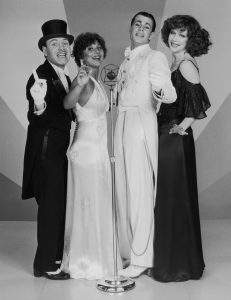 TST: You also coupled that unique sound with a distinctive look—vintage tuxedos, long gowns and zoot suits.
TST: You also coupled that unique sound with a distinctive look—vintage tuxedos, long gowns and zoot suits.
AP: Absolutely. In 1972, the Vietnam War was over. We were starting in New York, at the same time there were a lot of the folk clubs with singer/ songwriters protesting the war. When that changed, those clubs became cabarets. There was a new wave with people wanting to move on. There was a recession. People wanted to go out and celebrate and just forget about stuff. It was kind of the beginnings of Glitter Rock. And that is kind of what we came out of in a sense. On the left side, you had the New York Dolls. And on the right side you had us. We were kind of dressing similar, lots of makeup, and a lot of outrageous clothing. But musically we were different.
TST: So, the band’s image was decidedly more theatrical than what people might expect from a jazz group in the 1970s?
AP: We didn’t want to just come out in jeans. We wanted to be recognized. We wanted to walk out onto the stage and people to basically look at us. We wanted to visually interpret what we were doing musically with a lot of the styling from the 1940s. I was into Cab Calloway so my look was a white tuxedo. It all came from Cab Calloway. When we first started, we were a little bit more outrageous. And then I said, “Why don’t we make the look like a little more sophisticated? More like black and white. More like Fred Astaire and Ginger Rogers, in gowns and tuxedos and stuff.” And that’s what we did.
TST: And then how did the music get chosen? Was that a group effort?
AP: I think initially in the beginning, we were kind of following Tim’s lead because this was his concept to do the four-part harmony. It didn’t exist in pop music at the time. It was considered too sophisticated or too jazzy. But we wanted to be different. We wanted to create a sound, which was that, the four-part harmony. The songs that we picked were really eclectic. Growing up in the New York metropolitan area, there was a lot of different music, and we were all influenced by that.
TST: The crossing and mixing of musical genres really has been a staple of the Manhattan Transfer throughout the group’s history.
AP: Our perspective was, “Well, why be stuck in one genre? You don’t have to do that. Let’s take our sound and apply it to any music that we hear. Whether it is rhythm and blues. Whether it’s swing music. Whether it’s doo-wop. Let’s try and add as much as we can.” And that’s what we did. I would say the first six songs that we learned came from Tim and we all started bringing songs in. Since then, Janis and I have mostly been the group’s arrangers.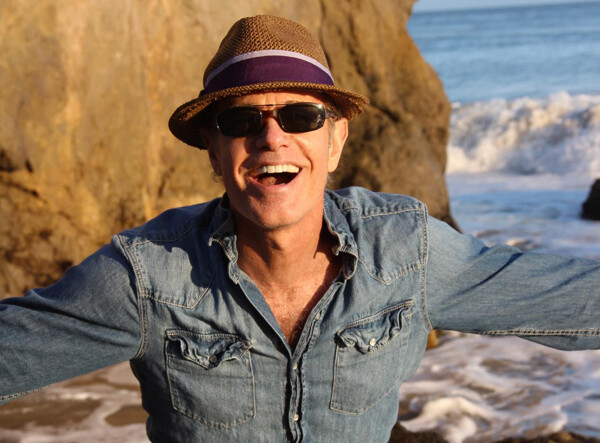
TST: Your unique look and sound worked well enough to get a recording contract with Ahmet Ertegun and Atlantic Records. The group’s first record, The Manhattan Transfer, hit #33 on the Billboard charts in 1975 and a 4-week CBS television series followed in the summer. The album was warmly received but the variety show isn’t something many people remember. Hauser said (in an interview) that he thought that it damaged the group’s image. What do you recall about it?
AP: Well, it’s interesting. It was a summer replacement for Cher’s TV series. After we did our first album, we came out to Los Angeles and played the Roxy Theater for three weeks. We sold out every show. Through that, we were asked by Mary Tyler Moore to do a variety TV show with her. [Note: The show, a musical fantasy entitled, Mary’s Incredible Dream aired on January 22, 1976.] I think it drew the attention of CBS [executives]. We really didn’t want to do the [replacement] show. When we got the offer, we said to our manager at the time, “Our deepest concern was that if we went on TV, we wouldn’t get played on the radio.” If you were a musical act that did a variety show, they would not play you on the radio. But he kind of convinced us that we would have creative control over the show and that basically, at this junction, nobody in the Midwest knew who we were. He felt that this would expose us to the country. So, we did the shows. I think that it served its purpose of exposing us to the country.
TST: After the series and two more studio albums, Coming Out (Atlantic, 1976) and Pastiche (Atlantic, 1978), you had to unexpectedly replace Laurel Masse who had been seriously injured in a car accident. How did the band make that big decision?
AP: We went to Ahmet Ertegun, who signed us to Atlantic Records, to get his advice. And we had worked so hard up to that point. By this time, we were really big in Europe. The second album had come out. The third album had come out. “Chanson D’Amour,” [a single] from the second album, was a hit in the UK and France. I mean, he recognized all of this. And he had gone through this before with other groups. He said that we should continue and just find a replacement.
TST: You found Cheryl Bentyne and within a year TMT released Extensions (Atlantic, 1979). The record was a departure as it mixed fusion and contemporary dance beats into your sound.
AP: That was a game changer for us in so many different ways because it was the first album that Cheryl was on and was just a radical change in a sense. Prior to that, our albums were along the lines of the original, more vintage sound. But we couldn’t get played on the radio. “Operator,” from the first album, was kind of a minor hit. It got played down South a lot.
TST: The album featured one TMT’s most popular songs—a version of Weather Report’s “Birdland” with lyrics by Jon Hendricks of Henricks, Lambert, & Ross. It not only became the most played jazz record of 1980 but also earned the group its first Grammy Award (Best Jazz Fusion Performance). How did it come to be included in the album?
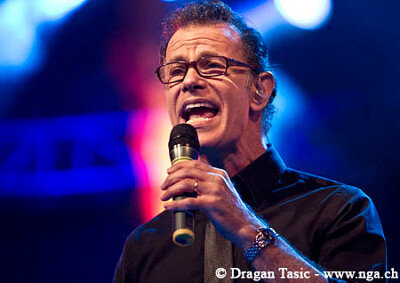 AP: We had already been listening to a lot of different music and had a lot of different ideas. Janice had discovered Weather Report’s song, “Birdland.” And I think we were frustrated because we still hadn’t broken in America. We couldn’t get played on the radio. It was like we were still a “cult group.” So, we changed producers. We got Jay Graydon to do [produce] the record. We said that we had nothing to lose. That particular album, Extensions, was really the album that broke us in America. The album also kind of opened up Asia for us as well. It was definitely one of my favorites.
AP: We had already been listening to a lot of different music and had a lot of different ideas. Janice had discovered Weather Report’s song, “Birdland.” And I think we were frustrated because we still hadn’t broken in America. We couldn’t get played on the radio. It was like we were still a “cult group.” So, we changed producers. We got Jay Graydon to do [produce] the record. We said that we had nothing to lose. That particular album, Extensions, was really the album that broke us in America. The album also kind of opened up Asia for us as well. It was definitely one of my favorites.
TST: The band’s sound continued to become more eclectic. Mecca for Moderns (Atlantic, 1981), the follow up album, focused on pop with the cover of 1964 soul hit “The Boy from New York City.” The song reached #7 on the Billboard Hot 100 chart. It widened your audience, and earned TMT two more Grammys, but disappointed some jazz fans and critics.
AP: We had jazz aficionados stop and say, “Why are you guys singing ‘Boy From New York City?’ What’s the matter with you? It’s like a disgrace to jazz singing.” And we are saying, “No it’s not. If you look at any genre, how do you compare a Frankie Lyman to a Miles Davis?” You look at each genre and you look at the mastery of someone as a singer. That’s what we would do. It is what moves you in a sense. We know the difference between something that is really together and something that is not. That’s what we’ve always done and we have tried to expand, grow, and try different things. The formula is really no formula. It’s just going on inspiration at a particular time.
TST: You proved your jazz bona fides again in 1985 with the album Vocalese (Atlantic) that earned 12 Grammy nominations and won two. The album featured all jazz songs with new lyrics written by Jon Hendricks. How was it working with a jazz legend?
AP: Vocalese, as you know, is when you take an instrumental piece and you write lyrics to all the solos and all the ensemble parts. Basically, the full arrangement. We did it before that album; we had done (the Count Basie song) “Until I Met You (Corner Pocket)” [on Mecca for Moderns]. And that relationship with Jon was so special. He was so, so talented as a writer. He was really our mentor. And we still do that [vocalese]. It is a very big part of what The Manhattan Transfer is. We did Horace Silver’s “Doodling,” early on, even before we were recording. It was always a part of the group. I think it really culminated with our albums and the work that we did with Jon.
TST: When Tim Hauser passed away in 2014 [of cardiac arrest at age 72], was there any discussion of just disbanding?
AP: There was. We didn’t quite know what we were going to do. And the same thing happened also when Laurel Masse left the group before Extensions. With Tim’s illness, it was very, very difficult. We didn’t know. Trist Curless, who is in the group now, was subbing for Tim periodically when Tim had to have surgery. Cheryl was also out because she had cancer (in 2012). So, there was that juncture where two members of the group were out, and we had two subs in (Curless for Hauser and Margaret Dorn for Bentyne). We just didn’t know what we were going to do.
TST: But you decided to keep going.
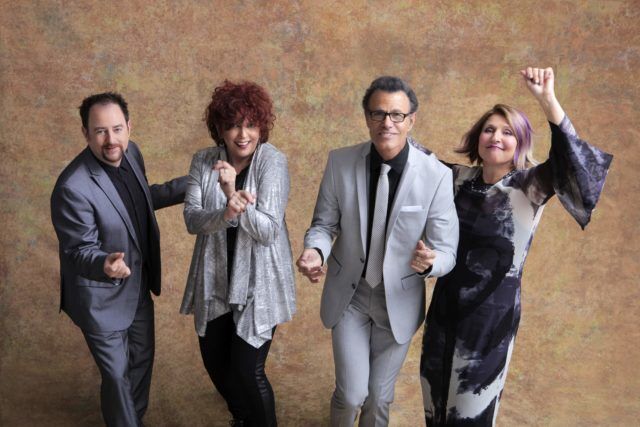
AP: Fortunately, Cheryl’s cancer went into remission within a year. She is back with us. And Trist came back in and replaced Tim. It took us a while. It took us four years really to go through this whole transition. I think the year when Tim passed away—that whole year in a sense—was like a memorial. We would tour and we wanted to allow our fans to share with us the grief of losing Tim. Then it got to a point where we needed to move on.
TST: You did move on by continuing to tour and record. In 2018, TMT released The Junction (BMG) produced by five-time Grammy winner Mervyn Warren, a founding member of Take 6. The album has the expected eclectic style but also a very modern, forward-thinking sound. How do you see that record?
AP: That is the first album that Trist is on. I think with that it’s kind of solidified that we are now back. And our fans have accepted Trist but not as a replacement for Tim because Tim is irreplaceable. It was never about that. It was about finding a bass singer that that could take care of the bottom. Trist brings to the group a different personality, a different voice.
TST: In 2022, TMT celebrates its 50th anniversary. Many groups are lucky to last five years. What is in the works to mark that milestone?
AP: We are having a documentary being made. I have been working with the director, doing interviews with different people who played a significant role in our career at different times. And Concord Records now has our catalog. We have an arrangement with them for putting together a box set that is going to celebrate our 50th anniversary.
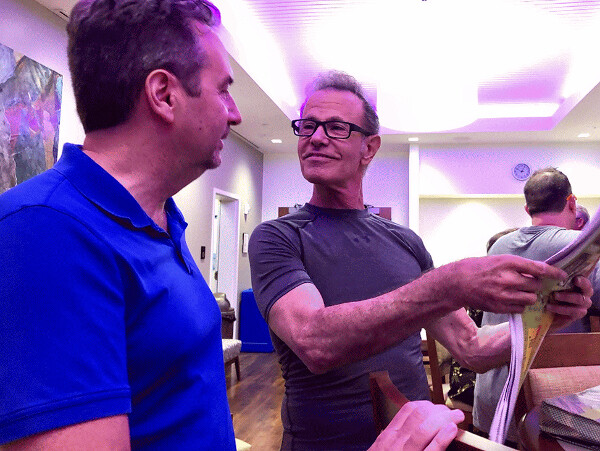
TST: What is it that keeps you together?
AP: I think that it’s love. I think that it’s caring for each other. It’s being a family. I think it’s always been that way. Most certainly within families, you know, you have the dynamics of a family. It’s not to say that everything is always smooth because it’s not. It has always been really important to us. The Manhattan Transfer was like our child. It was like our baby. It was like something that we created and that meant something to us. We loved singing harmony. We love singing together. We’ve been very fortunate in our career that our fans have, from the beginning, stayed with us. And the fan base has expanded so that we always worked. We never stopped.
Brian R. Sheridan, MA, is the chair of the Communication Department at Mercyhurst University in Erie, PA (hometown of Ish Kabibble) and a longtime journalist in broadcast and print. He also co-authored the book America in the Thirties published by Syracuse University Press. Sheridan can be reached at bsheridan@mercyhurst.edu. Find him on Twitter @briansheridan and Instagram at brianrsheridan.






















